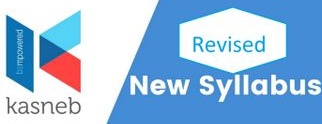COLLECTIONS MANAGEMENT
UNIT DESCRIPTION
The paper is intended to equip the candidate with the knowledge, skills and attitude that will enable him or her to effectively manage debt collections.
LEARNING OUTCOMES
A candidate who passes this paper should be able to:
- Employ concepts, processes, techniques and best practices for effective debt collection in consumer, trade and export credit
- Establish, arrange and negotiate debt repayment plans with various clients
- Integrate ICT skills in collection process
- Examine the risks associated with consumer, export and trade debt collection
- Evaluate the impact of legal regulatory and industry framework on consumer, export and trade debt collection
CONTENT:
- Introduction to credit control /Collections
1.1 Importance of credit control/collection in an organisation
1.2 Organisational structure of credit control/collection function
1.3 Roles and objective of a collection officer
1.4 Collection cycle in consumer credit, trade credit and export credit
1.5 Collection Skills and attitudes
1.6 Steps in collecting a debt – Manual and Automated processes
- Collection Communication and personal skills
2.1 Personal Skills and behaviour required in collection
2.2 Characteristics of Effective communication in collection
2.3 Negotiation skills in collection
2.4 Negotiation principles and decision making skills in collection
- Collection Methods and Techniques
3.1 Types of collection tools
3.1.1 Telephone
3.1.2 Letters
3.1.3 Sms
3.1.4 Emails
3.1.5 Sales Team
3.1.6 Suspension of credit
3.1.7 Personal Visit
3.1.8 Skip Tracing and asset Searches
3.1.9 Third party collectors
3.2 Advantages and disadvantages of collection methods
3.3 Collection techniques- 80/20 rule
3.4 Handling of non-payment and disputes
3.5 Building Blocks for collection success
3.6 Revenue collection challenges
- Documentary Collections- Export, consumer & Trade Credit
4.1 Documentary collection vs Documentary credit
4.2 Parties to documentary collection
4.3 Documentary Collection procedures
4.4 Types of collections
4.5 General notes and cautions on documentary collection
4.6 Do’s and Don’ts in documentary collection
4.7 International collection process
- Collection policy, procedures, services and Measurement
5.1 Contents of a collection policy
5.2 Role of a collection policy
5.3 Collection procedures
5.4 Functions and responsibilities of collection officers
5.5 Debt collection measurement
- Application of Debt Re-arrangement schemes
6.1 Structuring Successful Negotiations
6.2 Rescheduling, consolidation of debtors accounts
6.3 Decisions on debtor’s Work-outs, Deferment, Forbearance, graduated payments, debt Write-off
6.4 Application of retention of title, Discounts and Rebates as customer payment incentives
6.5 Counseling and advising debtors
6.6 Alternative Debt Resolutions ADR Methods- Arbitration, Mediation and Adjudication
- Computerised collections and management system
7.1 Components of an effective collection system
7.2 Customer information storage
7.3 Billing
7.4 Collection aids
7.5 Cash allocation
7.6 Customer reconciliation
7.7 General Ledger management and reports
7.1 System Tasks
7.1.1 Online document management system for collections management
7.1.2 Maintain a database of – contacts, orders and assets
7.1.3 Payment deduction investigation system
7.1.4 Offer customer secure internet payment options
7.1.5 Automate the customer communication system
7.2 Online Based Tools
7.2.1 Collection through Social Media – Guidelines, risks and Tips for successful collection on Social Media
7.2.2 Collection through Call Centres, Types of call centres, How to handle angry, difficult and irate callers, Reasons for using call centres, Benefits of call centres
7.2.3 Artificial Intelligence in Debt Collection – Use of Chatbods, AI and Virtual Agents for debt collection, Benefits of AI in collection
- Risks Associated with Debt Collection
8.1 Lack of credible customer information
8.2 Operational capacity challenges
8.3 Identifying the vulnerable groups
8.4 Credit Fraud – Asset concealment, Fraudulent financial statements and trade references, check frauds
8.5 Foreign Corrupt Practices
8.6 Language to be used when chasing foreign customers
- Collections – Regulation and industry Framework
9.1 Background The debt collection industry
9.2 Regulation of collection Practices
9.3 Restraints and Restrictions on Gathering and Disseminating Credit Information
9.4 Consumer protection laws
9.5 Data protection Act
9.6 Role of third party buyers and collectors
9.7 Communication with Debtors – Deceiving Debtors, Harassing phone calls, communicating with Third parties
9.8 Export licenses, the foreign corrupt practices act and compliance with foreign regulations governing imports
9.9 Ethical and Professional standards in collection
